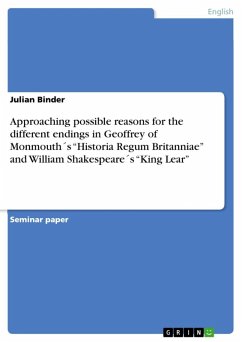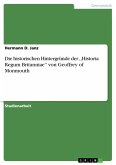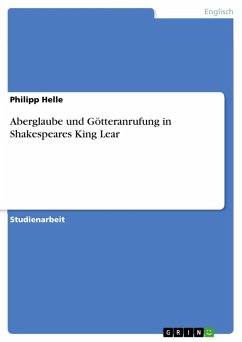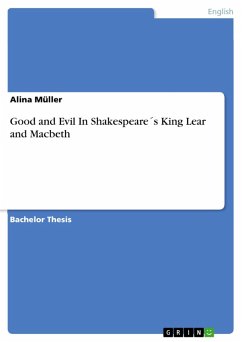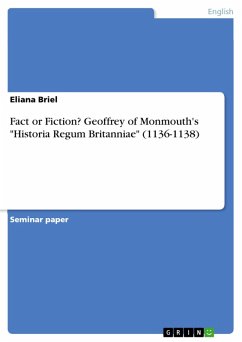Seminar paper from the year 2011 in the subject English Language and Literature Studies - Literature, grade: 1,0, University of Tubingen, language: English, abstract: 1. Introduction: ... This is the basic plot of the legend of King Lear. Geoffrey of Monmouth, a magister and later bishop of Saint Asaph, used it for his Historia Regum Britanniae, also known as The History of the Kings of Britain, a work which pretends to be a history of the British rulers. It was written between 1135 and 1138 and served William Shakespeare as a source for his tragedy called King Lear, which was written between 1603 and 1606. It is no big secret that legends, plays and even traditions sometimes undergo massive changes in the course of time. By comparing the modern celebration of Halloween or St. Nicholas¿ Day to their original meaning, we are able to detect various differences. These changes could be seen as a kind of defamiliarization of their ancient message. Can they simply be seen as a try to change old and established elements into modern and popular objects that are suitable for the longing and the desire of the mass? By having a closer look at today¿s commercial character of Halloween and Christmas, one would tend to agree. On the other side, it seems to be quite logical that different periods with different social and political circumstances can cause different interpretations and expectations of a piece of literature or an event. Although Shakespeare¿s and Geoffrey¿s works are dealing with the same background legend, their message and their intentions seem to be quite different. As it was Shakespeare who adapted the Lear story and provided it with several changes, the question arises why he did so. Did he make these changes for commercial reasons? Did he try to integrate the legend into a contemporary context in order to influence the masses to attend his play? Was he politically dependent and in some way forced to do it? Are contemporary values and ideas of his era the key to explain the changes? The aim of this paper is to find out, or at least to approach Shakespeare¿s and also Geoffrey¿s intentions for providing their own versions of the story of King Lear with special characteristics. In order to be able to compare the different works, it seems to be necessary to provide some background information about both in the following... 2. Geoffrey of Monmouth¿s "Historia Regum Britanniae" 3. William Shakespeare¿s "King Lear" 4. Possible reasons for the different endings 4.1 Specific patterns 4.2 Religious influences 4.3 Different genres 4.4 Political influences and dependencies 5. Conclusion 6. Works cited
Dieser Download kann aus rechtlichen Gründen nur mit Rechnungsadresse in A, B, BG, CY, CZ, D, DK, EW, E, FIN, F, GR, HR, H, IRL, I, LT, L, LR, M, NL, PL, P, R, S, SLO, SK ausgeliefert werden.

